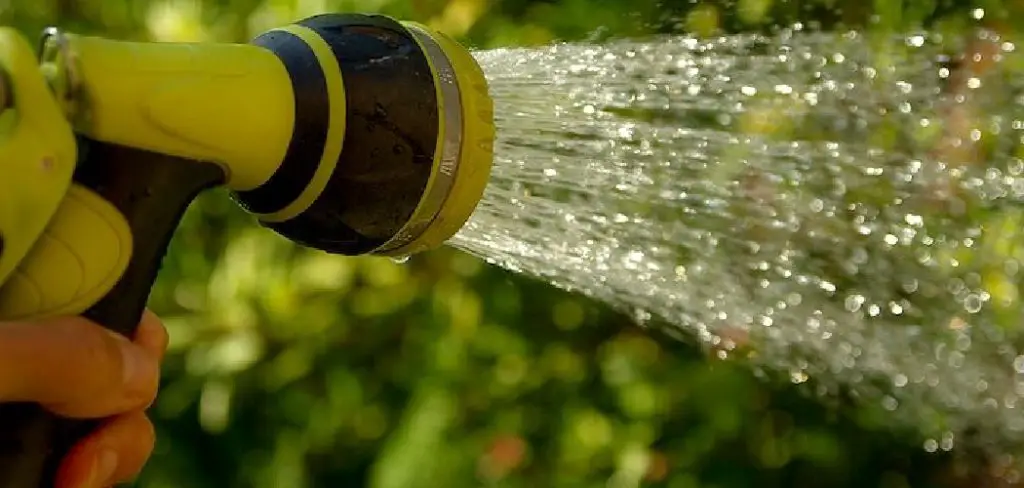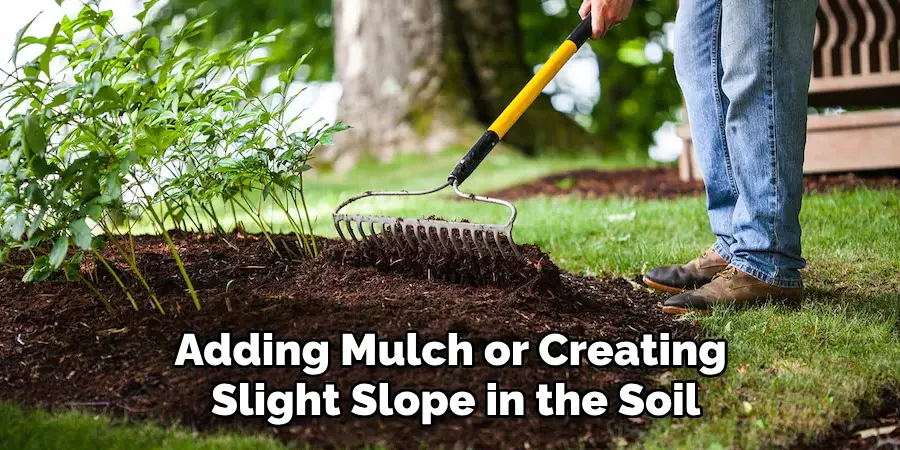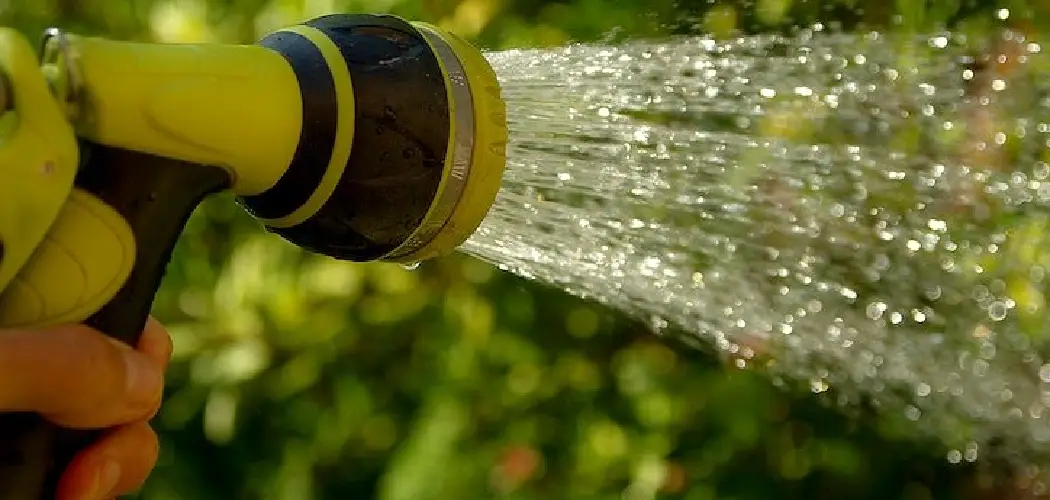Arborvitae is a popular evergreen tree that can add beauty and privacy to your landscape. However, like any other plant, it requires proper care and maintenance to thrive. One of the most important aspects of caring for arborvitae trees is watering. In this blog post, we’ll discuss how to water arborvitae with hose, whether you should use a sprinkler or not, and how often to water your tree.

Why Is It Important to Water Arborvitae Properly?
Arborvitae trees are known for their lush, green foliage and ability to thrive in various soil types. However, to maintain this lush foliage and prevent the tree from becoming susceptible to disease, it is crucial to water Arborvitae properly. Improper watering, such as overwatering or watering too infrequently, can lead to root rot and other fungal diseases.
Proper watering involves ensuring that the soil is moist but not soggy and that the tree receives enough moisture to promote healthy growth. Watering Arborvitae properly allows you to maintain a vibrant, healthy tree that adds beauty and value to your landscape for years to come.
How Often to Water Arborvitae
Determining how often to water Arborvitae can vary depending on several factors, such as climate, soil type, and tree age. Newly planted arborvitae trees will require more frequent watering than established trees. As a rule, you should water your tree deeply once a week during the first year after planting.
This allows the root system to establish itself and helps the tree become more drought-tolerant in the future. Once your Arborvitae is established, you can decrease the frequency to once every 2-3 weeks. However, this can vary depending on the weather conditions. During hot, dry periods, you may need to water more frequently to ensure your tree receives enough moisture.
How to Water Arborvitae with Hose: Step-by-Step Instructions
Step 1: Type of Soil
When it comes to watering your arborvitae, there are several things that you need to keep in mind. First, you need to consider the type of soil your tree is growing in. If your soil is sandy, you may need to water your arborvitae more frequently, as sandy soil and other soil types don’t hold water. If your soil is clay-based, however, you may need to water it less frequently, as clay holds onto water for longer periods.
Step 2: Time of Day You Water
Another thing to consider is the time of day you water your arborvitae. Watering your tree in the early morning or at night is generally best, as this will allow the water to soak into the soil before the sun evaporates. Avoid watering your tree in the heat of the day, as this can cause the water to evaporate before it reaches the roots.

Step 3: Amount of Water
When watering your arborvitae with a hose, it’s important to give it enough water to reach the roots. Aiming for at least an inch of water each week is a good rule of thumb. You can use a rain gauge or even a tuna can to measure the water your tree has received. If your tree is newly planted, you may need to water it more frequently until its roots are established.
Step 4: Using a Sprinkler
Some people may choose to use a sprinkler when watering their arborvitae. While this can be convenient, it’s important to ensure that the water reaches the tree’s base and not just spray on the leaves. It’s also best to avoid using a sprinkler during windy days, as this can cause uneven watering and water loss due to evaporation. If you do use a sprinkler, make sure to monitor the watering and adjust as needed.
Step 5: Avoid Overwatering
While giving your arborvitae enough water is essential, it’s also important to avoid overwatering. Too much water can drown the roots and cause root rot. Signs of overwatering include yellow or wilted leaves, mold growth, and a musty smell. If you notice these signs, reduce the watering until the tree can dry out. You can also improve drainage around the tree by adding mulch or creating a slight slope in the soil.

Step 6: Consider Using a Slow-Release Hose
For busy people who may forget to water their arborvitae regularly, using a slow-release hose can be helpful. These hoses have small holes along their length that allow water to slowly seep out over time, providing consistent watering for your tree. This is especially useful during hot and dry periods when regular watering is essential for your tree’s health.
Step 7: Monitor and Adjust
Lastly, monitoring your arborvitae and adjusting your watering schedule as needed is important. Weather, soil type, and the tree’s age can all affect how much water your tree needs. Regularly checking on your tree and making adjustments can ensure that it has just the right amount of water for optimal growth.
5 Benefits of Water Arborvitae with Hose
1. Low Maintenance
Water arborvitae with hose is a low-maintenance option for landscaping and gardening. The hose makes it easy to water the plants, and the water arborvitae do not need to be pruned or fertilized regularly. This makes it an ideal choice for those who want to enjoy a beautiful garden without having to devote too much time and effort to maintaining it.
2. Cost Effective
Water arborvitae with a hose is also more cost-effective than other options. The hose can be purchased relatively cheaply, and the water arborvitae plants are less expensive than other types of trees or shrubs. This makes it an attractive option for those looking to create a beautiful landscape without breaking the bank.
3. Versatile
Water arborvitae with hose is also incredibly versatile, as it can be used in various settings. Whether you want to create a formal garden or add some greenery to your backyard, water arborvitae with a hose is ideal. It can also be used in both sunny and shady areas, making it suitable for almost any location.

4. Long Lasting
Water arborvitae with hose is also known for its long-lasting qualities, as it can survive in harsh climates for many years without needing too much maintenance or care. This makes it an excellent choice for those looking for a durable plant that will survive all kinds of weather conditions and remain healthy for many years.
5. Attractive
Finally, water arborvitae with a hose are extremely attractive and add visual interest to any garden or landscape design. Its lush foliage provides shade during hot summer days, while its vibrant green color adds life and beauty to any outdoor space all year round.
What to Do if Your Arborvitae Is Turning Brown
Arborvitae trees are a popular choice for adding privacy and beauty to your yard. However, it can be concerning if you notice your arborvitae turning brown. Don’t panic yet; there are ways to help your tree recover. The first step is to identify the cause of the browning. It could be due to over or under-watering, pests, disease, or incorrect planting.
Ensure you give your tree enough water but not too much and inspect for any pests or diseases. You may also need to adjust the amount of sunlight the tree receives. If all else fails, consult a professional arborist to assess the situation and recommend the best action. Your arborvitae can recover and continue to thrive with proper care and attention.
What to Do if Your Arborvitae Is Losing Needles
Arborvitae trees are a beautiful addition to any landscape. Unfortunately, they are sensitive trees that can sometimes lose their needles. If you notice that your arborvitae tree is losing needles, there are several things you can do to help it recover. The first step is to examine the tree carefully and look for any signs of pests, such as spider webs or holes in the bark.
If you see any pests, you must treat the tree with the appropriate insecticide. If there are no pests, you may need to adjust the tree’s watering and fertilizer schedule. Arborvitae trees prefer evenly moist soil, so ensure you water it thoroughly each week. Finally, it’s important to prune the tree regularly to help it maintain a healthy shape. With a little care and attention, your arborvitae tree will bounce back and continue to thrive for years to come.

What to Do if Your Arborvitae Is Dying
If you notice that your beloved arborvitae is not as healthy as it once was, it could be dying or on its way there. But don’t panic just yet – you can take steps to try to save it. The first thing you should do is identify the source of the problem. Is it getting too much or too little water?
Is it being exposed to too much sun or not enough? Is it infected with pests or diseases? Once you have determined what is causing the decline, you can take action to address it. This may involve adjusting your watering schedule, trimming off diseased or damaged foliage, or applying a pesticide or fungicide. With some care and attention, you may be able to nurse your arborvitae back to health.
Conclusion
Watering your arborvitae with a hose doesn’t have to be complicated as long as you follow some basic guidelines. Water deeply, use a hose with a nozzle, avoid sprinklers, water in the morning or at night, and check the soil moisture regularly. By following these tips, you can keep your arborvitae healthy and thriving for years to come. Thanks for reading our post about how to water arborvitae with hose.

